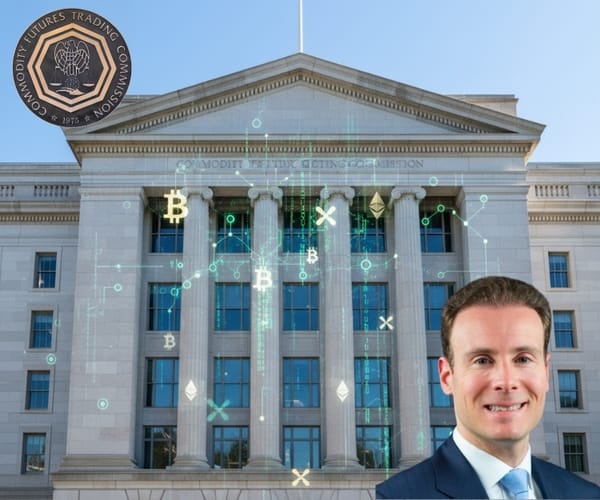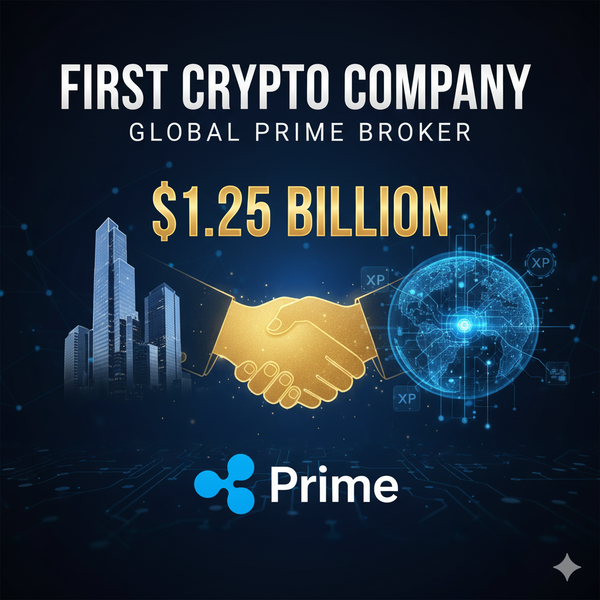SEC Stablecoin Bombshell: The Regulatory Shift That Changes Everything
How the SEC's cash equivalent ruling could unleash billions in institutional capital and reshape the stablecoin landscape. Note: Tether may have an issue.

SEC Stablecoin Bombshell: The Regulatory Shift That Changes Everything
How the SEC's cash equivalent ruling could unleash billions in institutional capital and reshape the stablecoin landscape
The Regulatory Earthquake
The U.S. Securities and Exchange Commission has issued interim guidance allowing certain U.S. dollar-backed stablecoins to be treated as cash equivalents on corporate balance sheets, marking what many consider the most significant regulatory breakthrough for digital assets since Bitcoin's emergence.
This isn't just another regulatory clarification—it's a fundamental shift that removes one of the primary barriers preventing traditional financial institutions from embracing stablecoins. The action is viewed as a reversal of the SEC's earlier, more restrictive policies. It seeks to eliminate one of the main accounting hurdles that kept traditional financial institutions from participating.
The timing couldn't be more strategic. This guidance complements the GENIUS Act, which President Trump signed into law in July, creating a comprehensive regulatory framework that positions the United States as a global leader in digital asset adoption.
The "Covered Stablecoin" Standard: What It Takes to Qualify
The SEC's guidance introduces a new category called "Covered Stablecoins"—essentially the gold standard for regulatory-compliant digital dollars. To achieve this coveted status, stablecoins must meet extremely strict criteria:
Essential Requirements for SEC Compliance:
1. Full Reserve Backing
- Must be backed by USD and/or other assets that are considered low-risk and readily liquid
- Examples of such low-risk, readily-liquid assets include USD cash equivalents, demand deposits with banks or other financial institutions, U.S. Treasury securities, and/or money market funds
- At all times, the assets held in the Reserve back the amount of outstanding Covered Stablecoins on at least a one-for-one basis
2. Guaranteed Redemption Rights
- A Covered Stablecoin issuer mints and redeems Covered Stablecoins on a one-for-one basis with USD at any time and in unlimited quantities
- No delays or restrictions on redemption
- Legally binding redemption mechanisms required
3. 1:1 USD Peg Maintenance
- Designed to maintain a stable value relative to USD on a one-for-one basis
- Consistent price stability through unlimited mint-redeem structure
- Market price stability maintained through arbitrage mechanisms
4. Segregated Reserve Management
- The assets held in the Reserve are segregated from and not comingled with the assets of the Covered Stablecoin issuer
- Not used by the Covered Stablecoin issuer for operational or general business purposes
- Not otherwise lent, pledged, or rehypothecated for any reason
5. Transparent Marketing and Operations
- Marketed solely for use in commerce, as a means of making payments, transmitting money, and/or storing value, and not as investments
- Does not entitle a Covered Stablecoin holder to the right to receive any interest, profit, or other returns
- Regular third-party audits and reserve attestations
What's Explicitly EXCLUDED:
The SEC was crystal clear about what doesn't qualify:
- Algorithmic stablecoins - Those using supply adjustments rather than reserves
- Yield-bearing tokens - Any stablecoin offering interest or rewards
- Profit-sharing structures - Tokens that provide returns based on performance
- Assets not tied to USD - Anything backed by commodities, other currencies, or crypto
The Compliance Scorecard: Winners and Losers
✅ Currently SEC-Compliant Stablecoins:
USD Coin (USDC) - Circle
- USDC is backed by the equivalent value of US dollar denominated assets held as reserves
- The majority of the USDC reserve is invested in the Circle Reserve Fund (USDXX), an SEC-registered 2a-7 government money market fund
- Circle publishes monthly reserve attestations by a Big Four accounting firm
- Compliance Status: ✅ MEETS SEC REQUIREMENTS
Ripple USD (RLUSD) - Ripple
- RLUSD stablecoin received NYDFS approval and is expected to launch soon
- Backed 1:1 by cash and US Treasuries held in regulated reserves
- As the first NYDFS-regulated stablecoin, RLUSD has an advantage over decentralized, unregulated and offshore-regulated assets
- Compliance Status: ✅ POSITIONED TO MEET SEC REQUIREMENTS
⚠️ Potentially Non-Compliant Stablecoins:
Tether (USDT) - Tether Limited
- Tether claims that USDT is fully backed by reserves, including U.S. Treasuries, cash equivalents, and other assets. However, it does not undergo regular third-party audits
- USDT remains unregulated by any major government (it's incorporated in the British Virgin Islands) and uninsured
- Compliance Status: ❌ LIKELY FAILS TRANSPARENCY REQUIREMENTS
Dai (DAI) - MakerDAO
- DAI is collateralized not by fiat reserves but by crypto assets: users lock cryptocurrencies (like ETH, USDC, etc.) in smart contracts to mint DAI
- Not backed by USD or Treasury securities
- Compliance Status: ❌ FAILS RESERVE REQUIREMENTS
The XRP and RLUSD Advantage: Perfect Timing
The SEC's announcement creates a particularly compelling opportunity for Ripple's ecosystem. RLUSD requires XRP for transaction fees, which are burned during transfers, driving demand for the token. This creates a unique value proposition where institutional adoption of RLUSD directly benefits XRP holders.
Every RLUSD transaction requires XRP for fees, creating sustained demand as RLUSD institutional adoption increases. This mechanism positions XRP not just as a bridge currency, but as the fuel powering one of the most compliant stablecoins in the market.
Ripple's regulatory strategy appears prescient. The company was once heralded as a key player in the future development of the space, but saw a drop in industry support following the late 2020 filing of a lawsuit by the US Securities and Exchange Commission. Now, with their legal issues resolved and RLUSD positioned as a compliant stablecoin, they're perfectly positioned to capitalize on this regulatory shift.
The Institutional Flood Gates Open
This regulatory clarity addresses years of institutional hesitation. For banks and other lenders, this change could reduce compliance risk. If a stablecoin counts as a cash equivalent, it is easier to include in financial statements.
The implications are staggering:
For Corporate Treasuries: Companies can now hold compliant stablecoins as cash equivalents, improving their balance sheet flexibility and potentially earning yield on what was previously idle cash.
For Financial Institutions: Banks can integrate qualifying stablecoins into their liquidity management without complex regulatory workarounds.
For Payment Processors: The cash equivalent status streamlines accounting and reduces compliance overhead for companies facilitating stablecoin transactions.
For Investment Funds: Asset managers can now include compliant stablecoins in portfolios designed for capital preservation and liquidity management.
The Global Race for Compliance
This SEC ruling doesn't exist in a vacuum. Several non-compliant stablecoins have been delisted by Coinbase, Kraken and Crypto.com in response to Europe's MiCA regulations, showing that regulatory compliance is becoming a global requirement, not just an American preference.
The message is clear: the future belongs to compliant stablecoins. Projects that fail to meet these standards will find themselves increasingly marginalized as institutional adoption accelerates.
What This Means for the Future
The SEC's guidance represents more than regulatory clarity—it's a roadmap for the institutionalization of digital dollars. The guidance is temporary and said further rulemaking is likely as part of its ongoing "Project Crypto" initiative, but the direction is unmistakable.
For investors, the question isn't whether institutional capital will flow into compliant stablecoins—it's which projects will capture the most value from this tidal wave of adoption. Based on the compliance scorecard, USDC and RLUSD appear best positioned to benefit, with XRP uniquely positioned to capture additional value through its role in the RLUSD ecosystem.
The regulatory bomb has been dropped. The question now is which projects will rise from the fallout to dominate the institutional stablecoin landscape. Based on current compliance standings, the winners seem clear—and the losers may find themselves fighting for relevance in an increasingly regulated world.
The stablecoin landscape is evolving rapidly. This analysis is based on current regulatory guidance and public information. Investors should conduct their own research and consult with qualified professionals before making investment decisions.



